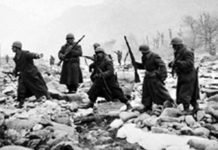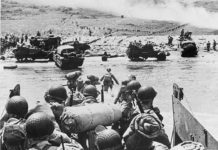The Carlist Wars are a series of conflicts over succession to the throne that rocked Spain for half of the 19th Century.
Named after a series of pretenders to the Spanish crown called Carlos, the hostilities were also about liberals against conservatives, urban centers versus the countryside and even about religion opposing secularism.
Causes of the Wars
Realizing that he had only fathered two daughters – Isabella and Luisa Ferdinand – King Ferdinand VII decreed what is known as the Pragmatic Sanction of 1830, allowing a woman to sit on the Spanish throne.
When Ferdinand die three years later, his wife, Maria Cristina, became regent on behalf of the three year old Isabella II. But the Infante Carlos, also known as Carlos V, a brother of the late king who until 1830 had been the heir to the throne, alleged that the Pragmatic Sanction did not apply to him because he was born before they were approved.
Spain was divided against itself. Carlos V’s supporters, were the Carlists; conservative, farmers and pro Catholic. The Queen’s followers, known as Isabelinos or Cristinos, were liberal, secularists and urban folks. Isabelinos were also proponents of a strong central government, idea that didn’t sit well with the strongly regionalist Spaniards.
First Carlist War
The First Carlist War lasted about six years, from 1833 to 1839. Most of the fighting took place in the northern Basque Provinces and the regions of Catalonia, Aragon and Valencia.
Both sides recruited foreign volunteers. One of the best known units was the 10,000 strong British Auxiliary Legion. It included four Irish regiments.
Even though the Carlist enjoyed wide support in most areas of Spain, they were defeated. The liberals imposed some harsh conditions on the Basques, limiting the use of their customs and language.
Second Carlist War
It is difficult to really consider this three year uprising (1846-1849) a war at all, but it is so recorded.
The hostilities took place mainly in Catalonia. It was an attempt to place the so called Carlos VI, son of the Infante Carlos of the First Carlist War, in power. The rebels had no chance.
Third Carlist War
The final Carlist conflict lasted from 1872 until 1876. A liberal conspiracy ousted Isabella II in 1868. The Spanish Cortes (Parliament) then installed the second son of Italian King Victor Emmanuel, Amadeo, Duke of Aosta, as monarch.
When the elections of 1872 went badly for the Carlist, the grandson of the Infante Carlos, calling himself Carlos VII, called his supporters to arms.
The rebels were able to take and hold various municipalities in the central part of the country, mainly because Amadeo was highly unpopular and was overthrown by the founders of the Spanish First Republic in 1873.
Neither the Republic, nor the Carlists could take control of Spain and amid the chaos arose General Arsenio Martínez Campos. The conservative officer decided that only the restoration of the Bourbon dynasty would bring order and progress to Spain. He settled on Alfonso XII, son of Isabella II.
Martínez Campo led a coup d’état against the Republic and offered the throne to Alfonso. On December 27, 1856, Alfonso XII returned to Spain and the man who would be Carlos VII, left the country for exile in France.
Estimates of casualties in the three conflicts range as high as 300,000.








